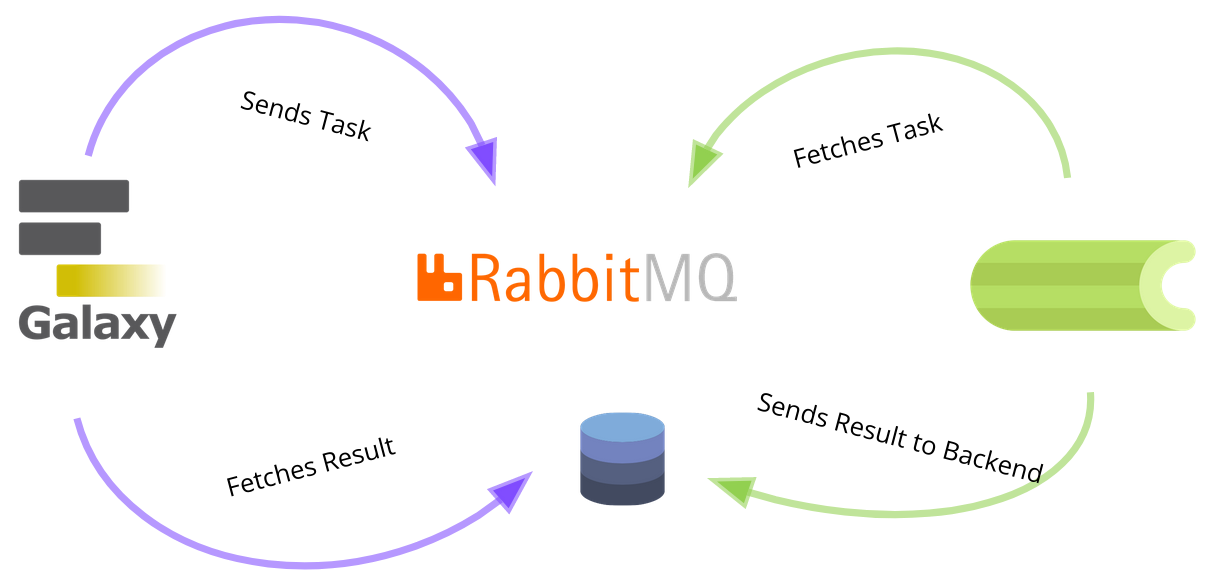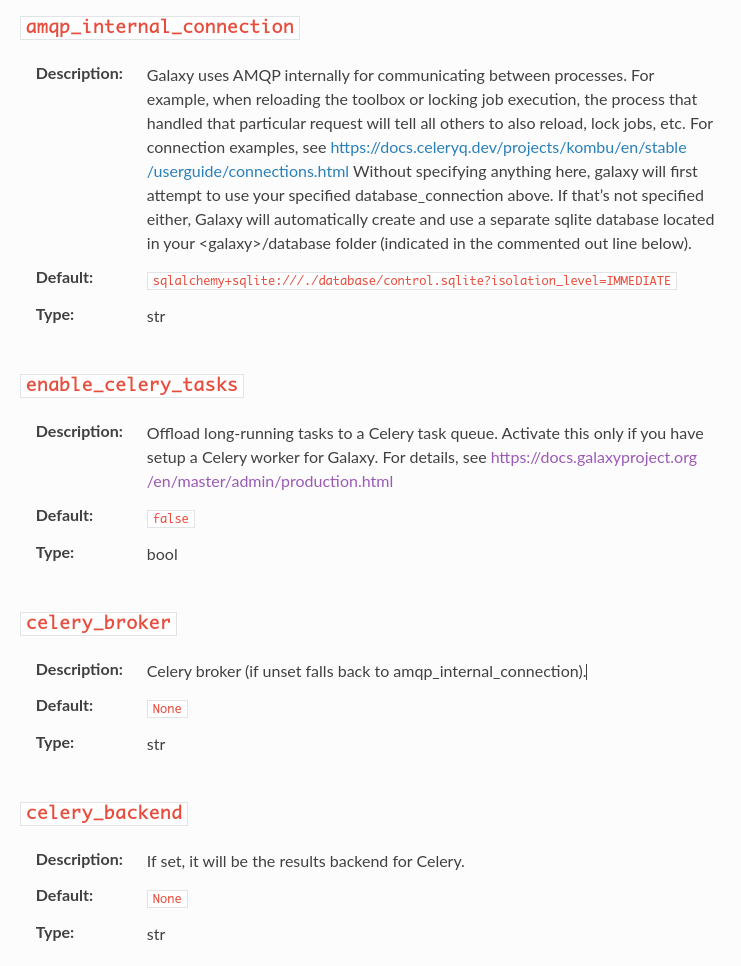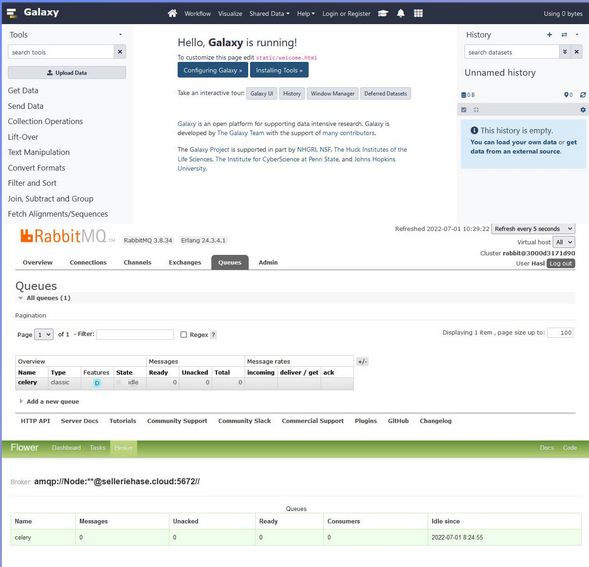name: inverse layout: true class: center, middle, inverse <div class="my-header"><span> <a href="/training-material/topics/admin" title="Return to topic page" ><i class="fa fa-level-up" aria-hidden="true"></i></a> <a class="nav-link" href="https://github.com/galaxyproject/training-material/edit/main/topics/admin/tutorials/celery/slides.html"><i class="fa fa-pencil" aria-hidden="true"></i></a> </span></div> <div class="my-footer"><span> <img src="/training-material/assets/images/gat.png" alt="page logo" style="height: 40px;"/> </span></div> --- <img src="/training-material/assets/images/gat.png" alt="page logo" class="cover-logo" /> # Galaxy and Celery <div markdown="0"> <div class="contributors-line"> <ul class="text-list"> <li> <a href="/training-material/hall-of-fame/mira-miracoli/" class="contributor-badge contributor-mira-miracoli"><img src="https://avatars.githubusercontent.com/mira-miracoli?s=27" alt="Avatar">Mira Kuntz</a> </li> </ul> </div> </div> <!-- modified date --> <div class="footnote" style="bottom: 8em;"><i class="far fa-calendar" aria-hidden="true"></i><span class="visually-hidden">last_modification</span> Updated: Jul 14, 2022</div> <!-- other slide formats (video and plain-text) --> <div class="footnote" style="bottom: 6em;"> <i class="fas fa-file-alt" aria-hidden="true"></i><span class="visually-hidden">text-document</span><a href="slides-plain.html"> Plain-text slides</a> </div> <!-- usage tips --> <div class="footnote" style="bottom: 2em;"> <strong>Tip: </strong>press <kbd>P</kbd> to view the presenter notes | <i class="fa fa-arrows" aria-hidden="true"></i><span class="visually-hidden">arrow-keys</span> Use arrow keys to move between slides </div> ??? Presenter notes contain extra information which might be useful if you intend to use these slides for teaching. Press `P` again to switch presenter notes off Press `C` to create a new window where the same presentation will be displayed. This window is linked to the main window. Changing slides on one will cause the slide to change on the other. Useful when presenting. --- ## Can you eat it .pull-left[ Celery is an asynchronous distributed task queue. It consists of: - Application that sends tasks - to a broker with queues - Worker(s) that execute the tasks - A Result backend to store the task results It's written in Python but supports multiple other languages via webhooks. ] .pull-right[  ] --- ## So many features .pull-left[ - Celeryd – the daemonized version of Celery - CeleryBeat a scheduler for repeated tasks - Flower, a monitoring interface for - Showing tasks, queues and workers - Prometheus + Grafana Integration ] .pull-right[  ] --- # How Celery Can Improve Galaxy --- .pull-left[ **The Problem** The Galaxy Server should respond quickly to every request. Gunicorn Workers should not do everything. **The Solution** Queue asynchronous tasks with Celery (happens currently internal on the same node) **The Improvement** Send the tasks to an external Celery-Cluster ] .pull-right[  ] ---  --- ## What is Celery Used For - Recalculating Disk Usage - Purging Datasets - Changing Datatypes - Preparing compressed downloads (histories, etc.) - Creating PDFs for Galaxy workflow reports - Cleaning up short term storage --- .pull-left [ ## What we need - A Galaxy Server, configured to use an external MQ and external Celery Workers - A properly set up broker (for example the [UseGalaxy.eu RabbitMQ Ansible Role](https://github.com/usegalaxy-eu/ansible-rabbitmq)) - A Celery-Cluster on external node with the full Galaxy repo, branch -> dev, which has run an initialisation (run.sh) and run the Celery Worker above [task definition folder](https://github.com/galaxyproject/galaxy/tree/dev/lib/galaxy/celery) ] .pull-right[  ] --- .pull-left[  ] .pull-right[ - [Configuration in `galaxy.yml` file](https://docs.galaxyproject.org/en/latest/admin/options.html#amqp-internal-connection) - Documentation primarily within codebase and developer, not admin-focused - `celery_broker` can be set, but defaults to `amqp_internal_connection` - Contributions are very welcome ;) - But: Celery, Flower and RabbitMQ are well documented ] --- .pull-left[  ] .pull-right[ ## What's currently easy - A Galaxy instance - A RabbitMQ instance - Running Celery via Gravity ] --- ## To Be Completed - Securing Celery documentation for Galaxy Admins - Running Celery on another node, outside of Gravity (maybe.) - The correct Telegraf configuration for monitoring - Dashboards --- ## Thank You! This material is the result of a collaborative work. Thanks to the [Galaxy Training Network](https://training.galaxyproject.org) and all the contributors! <div markdown="0"> <div class="contributors-line"> <table class="contributions"> <tr> <td><abbr title="These people wrote the bulk of the tutorial, they may have done the analysis, built the workflow, and wrote the text themselves.">Author(s)</abbr></td> <td> <a href="/training-material/hall-of-fame/mira-miracoli/" class="contributor-badge contributor-mira-miracoli"><img src="https://avatars.githubusercontent.com/mira-miracoli?s=27" alt="Avatar">Mira Kuntz</a> </td> </tr> <tr> <td><abbr title="These people edited the text, either for spelling and grammar, flow, GTN-fit, or other similar editing categories">Editor(s)</abbr></td> <td> <a href="/training-material/hall-of-fame/hexylena/" class="contributor-badge contributor-hexylena"><img src="/training-material/assets/images/orcid.png" alt="orcid logo"/><img src="https://avatars.githubusercontent.com/hexylena?s=27" alt="Avatar">Helena Rasche</a> </td> </tr> </table> </div> </div> <div style="display: flex;flex-direction: row;align-items: center;justify-content: center;"> <img src="/training-material/assets/images/gat.png" alt="page logo" style="height: 100px;"/> </div> <a rel="license" href="https://creativecommons.org/licenses/by/4.0/"> This material is licensed under the Creative Commons Attribution 4.0 International License</a>.